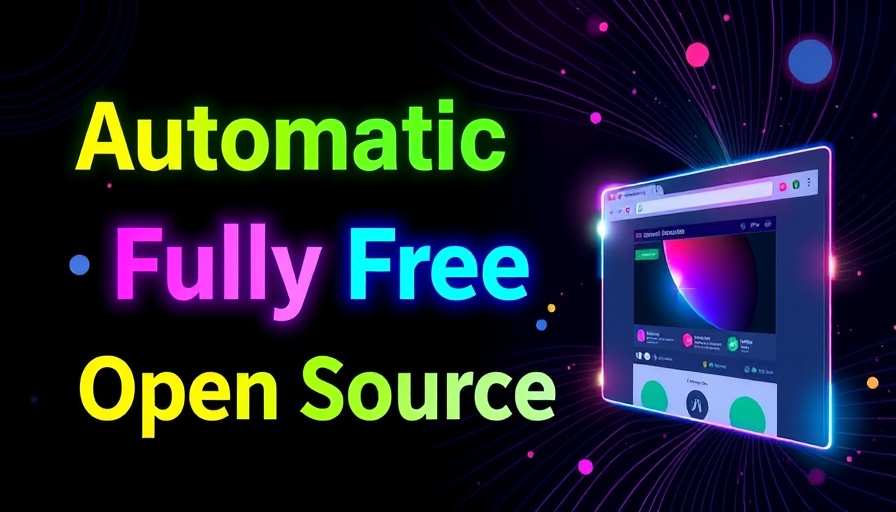
Introducing the Future of Web Automation: Nano Browser
The technology landscape is ever-evolving, and recently, the introduction of the Nano Browser has revolutionized web automation. This open-source tool empowers users to run multi-agent workflows directly within their web browser. With the capability to integrate various AI models, including the cutting-edge Gemini 2.5 Pro, it presents a unique solution for tech enthusiasts and developers alike.
In 'Automate Your Browser with Gemini 2.5 Pro! NEW Opensource Multi-Agent AI!', the video showcases the groundbreaking capabilities of the Nano Browser, leading us to explore its impact and potential use cases further.
Beyond Ordinary Browsing: Multi-Agent Workflows
One of the standout features of Nano Browser is its ability to execute parallel tasks through multiple agents. Imagine booking a flight on one side while gathering information from a different site on the other. This efficiency is not only practical but also showcases the potential of collaborative intelligent technologies. By leveraging different agents for planning, navigating, and validating tasks, users can enhance their web interactions like never before.
Why Open Source Matters in AI
Using an open-source platform like Nano Browser allows developers and users to customize their experience, ensuring they can tailor the browser to suit their needs. This flexibility paves the way for innovation and accessibility, making advanced web automation tools available to a broader audience. In a world where ethical use of AI is paramount, open-source solutions can also foster transparency and collaborative improvement.
Real-World Applications: Use Cases That Inspire
From healthcare to customer service, the implications of using AI like Nano Browser extend beyond mere convenience. For instance, automation in healthcare can streamline patient care operations, ensure more reliable diagnostics, and facilitate smoother administrative tasks. Furthermore, businesses can harness AI-driven tools to enhance customer experiences and improve efficiency in their operations, leading to better outcomes for both employees and clients.
Challenges to Consider in AI Automation
While technologies like Nano Browser are impressive, the rise of AI does pose challenges. Issues around AI ethics, privacy, and data security are at the forefront of discussions among developers and end-users. Ensuring that AI operates within ethical guidelines is vital, as these technologies become integrated into every aspect of our digital lives.
Conclusion: Embracing the Future of Automation
The Nano Browser presents a fresh perspective on how we interact with the web, combining user agency and AI power in a thoughtful manner. Its innovative application of multi-agent systems highlights the promise of AI in transforming our digital experience. As we embrace technologies like Nano Browser, we must also navigate the ethical dimensions they introduce into our busy lives. Explore this powerful tool and consider how you can leverage automation in your daily tasks. For more insights on AI innovations, don't forget to subscribe to the World of AI newsletter for regular updates!
 Add Row
Add Row  Add
Add 




Write A Comment